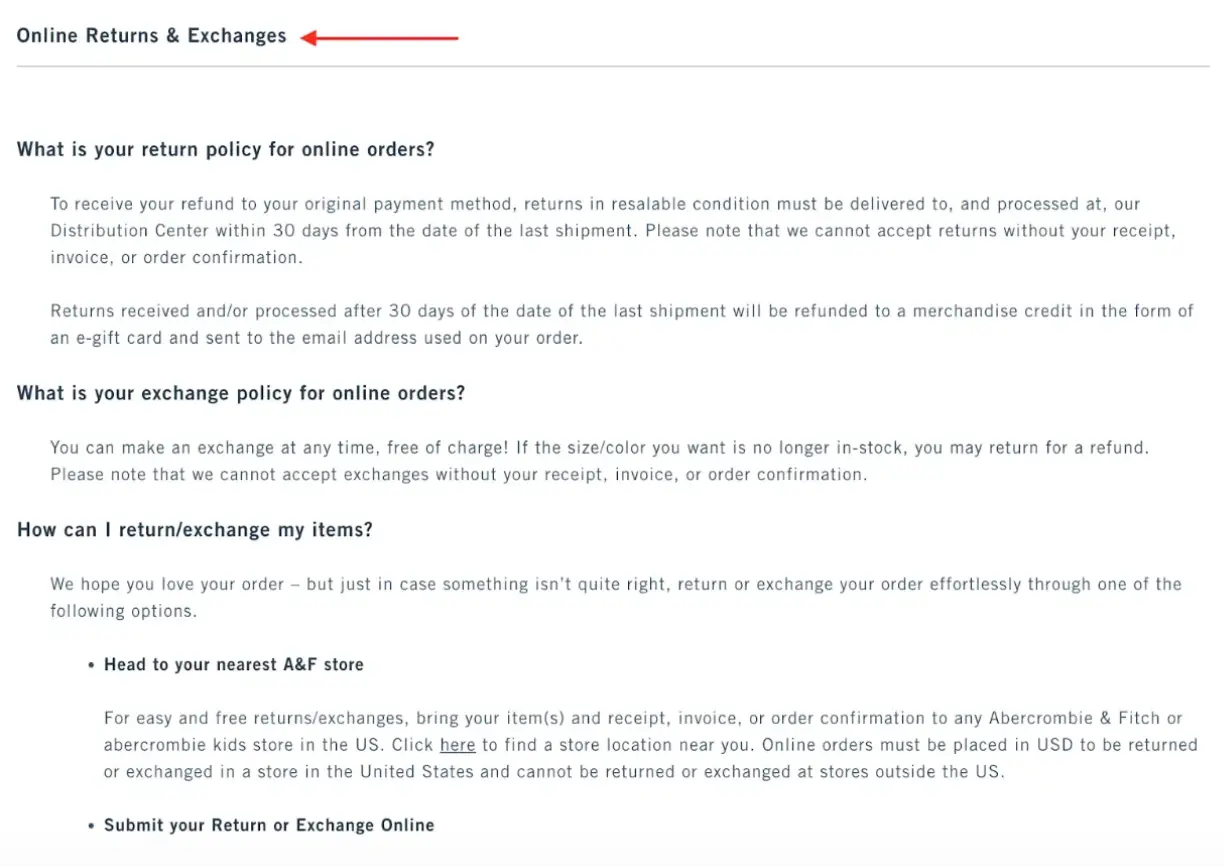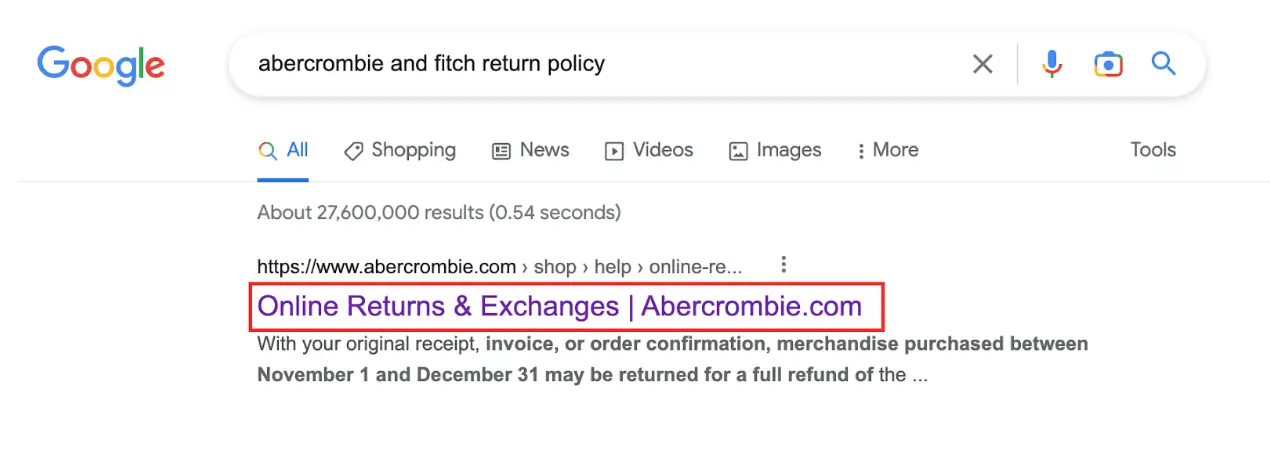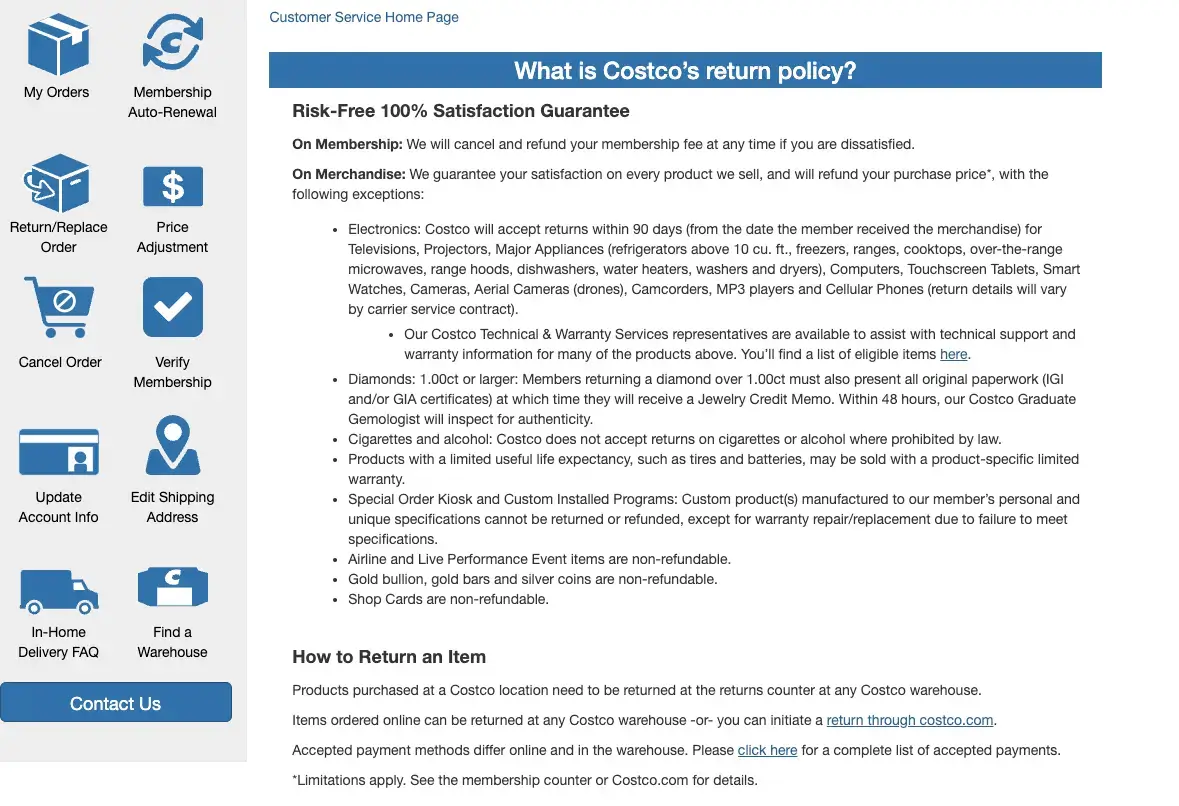The holiday season is a busy time of year for small business owners.
*Updated 6/26/2024
Once you make it through Black Friday, Cyber Monday, Small Business Saturday, and all of the Christmas shopping, it's smooth sailing, right? You're ready to sit by the fire and enjoy a long winter nap.
But the rush doesn't stop after you close your doors on Christmas eve.
It's common for brands to invest heavily in driving holiday sales, but are you paying attention to customer returns? In-person and online purchases are only one small part of the customer journey.
So what happens when someone receives two of the same sweaters for Hanukkah? Or the wrong size pair of shoes, style of jeans, or color of a jacket for Christmas?
About $260 billion in retail products are returned yearly, and 25% of those returns happen right after the holidays.
Without a proper return policy — or if your customers need help clarifying if they can return their products for a refund or replacement — you could lose out on a significant piece of your holiday sales.
And let's face it, no one wants to spend hours fielding emails from unhappy customers when you could be spending those hours working on other aspects of your business (or recovering from the madness).
Here are five best practices to prepare your return policy for the holiday season so your customers and employees can enjoy a stress-free shopping experience.
Let's dive in.
5 Best Practices for Preparing Your Return Policy for the Holidays
1. Make your return policy easy to find
Having a return policy is a must-have for any business.
A simple policy lets your customers know what they can expect when they purchase a product, which can help increase confidence in purchasing from you.
Make it easy for shoppers to return items by providing a return policy that's concise, accessible, and visible on your website.
Refrain from burying your policy information with small print at the bottom of your homepage or in other hard-to-find areas of your site.
Let shoppers see that you offer easy or free returns on everything you sell by creating a dedicated landing page for your return policy, like this one from Abercrombie & Fitch.

Then you can provide a link to this landing page in the footer of your website, allowing customers to access it from anywhere on your site.

Also, remember to submit the page for indexing with Google. Your return policy should appear as the first result on Google when someone searches for your brand, plus the return policy keyword.

The idea here is to house all relevant information about returns or exchanges in one place. Refrain from scattering pieces around different sections of your site because this will confuse and frustrate customers.
2. Use clear and concise wording
Your return policy is a legal document, but it should be straightforward and easy to understand. In fact, your return policy should be the most user-friendly part of your website.
Your goal is to make sure customers know exactly what their rights are if they need or want to return an item, but also don't require people to read through a sea of text and legal jargon to find the information they are looking for while executing a return.
To keep your customers informed and make it easy for them to get their money back, swap their item for a new one, or receive store credit, try a few of these tips:
- Use short sentences and paragraphs
- Write in bullet points where appropriate
- Use plain language instead of legal jargon wherever possible
- Add bold lettering to emphasize important information
3. Include frequently asked questions
During the holidays, it can be challenging to plan for every contingency. But if you have an FAQ page on your site, you'll be able to answer some of the basic yet pressing questions immediately.
For instance, if someone has a question about how long their order will take to ship or what your return policy is, they can find out immediately without looking through all of your content in search of an answer.
If you are a brand where customers least expect you to have a return policy, then an FAQ page is even more critical.
For example, have you ever thought you could get a refund after buying depression medications online? Yes, it's possible, and Hims & Hers FAQ page about their refund policy will assure you of that.
Just because you're selling a product that consumers can't return after use doesn't mean you shouldn't refund them if they're unsatisfied.
If you're worried about adding too much text to the page, consider using a separate FAQ landing page, which you can link to your main return policy page.
Or you can add a search feature or collapsable questions and answers to make the page more user-friendly.
You may consider updating this section once every few months to ensure that the information remains fresh and relevant, making it easier for you and your customers during the busy holiday season.
4. Take a customer-first approach
A return policy helps send a subconscious message to your customers that you are a trusted brand focused on your customers' interests instead of financial gain.
Plus, with a product-led growth strategy, you should have nothing to worry about because your product partially sells itself due to the overall delightful experience.
But, if, for some reason, your customer isn't satisfied with your product, they should have the right to a reasonable return or exchange policy.
Why? Because a poor return experience can be the death knell for customer loyalty. In fact, 95% of customers say they're less likely to shop with a brand again if they have a poor experience returning an item.
Costco has one of the most customer-friendly return policies due to its "risk-free 100% satisfaction guarantee" policy.

If someone wants to purchase an artificial light-up Christmas tree this holiday season, they'll likely choose Costco over the leading competitor.
Because if they pull the trigger on the purchase and don't like the tree (or it doesn't fit in their living room), the customer can return it to Costco for a full refund with no questions asked.
Using this customer-first approach, Costco has amassed almost 117 million members (who pay at least $60 annually to shop there). Not too shabby.
5. Extend your policy time horizon
Your return policy can help you stand out from the masses this holiday season.
Start by researching your different types of competitors and the returns policies that they offer during this time of the year.
Do they offer a full refund instead of a store credit? Do they have a particular holiday return policy? What is the window for an eligible return?
Every detail counts. If you miss one simple thing, potential customers might see you as a less trustworthy brand than your competition. And that's another added stressor to your already full plate.
But there's a simple way to avoid this dreaded fate. By focusing on providing a more extended return policy grace period (90 days rather than 30 days), you can decrease returns and boost your bottom line.
You can also offer an extended holiday return policy like Target for purchases between the holiday shopping window. The window for a return kicks off the day after Christmas.
The more time customers hang onto a product, the more attached they become to it, which decreases their chances of returning it in the first place.
Wrapping Up
The holiday season is a very hectic few months. You're trying your best to keep up with everything, ensuring you have enough inventory for the most significant sales event of the year and the appropriate marketing content to reach the right audience.
Preparing a holidays message can be quite challenging. Unfortunately, your return policy is one of those things that can quickly find itself on the back burner.
But, if you want to improve your customer's holiday experience, set up a solid return policy from the get-go — especially when people buy presents for others.
By following these five best practices, you can create a return policy that keeps your customers happy, improves the overall shopping experience, and turns one-time purchases into loyal customers for years to come.
Author Bio
Guillaume is a digital marketer focused on handling the outreach strategy at uSERP and content management at Wordable. Outside of work, he enjoys his ex-pat life in sunny Mexico, reading books, wandering around, and catching the latest shows on TV.



